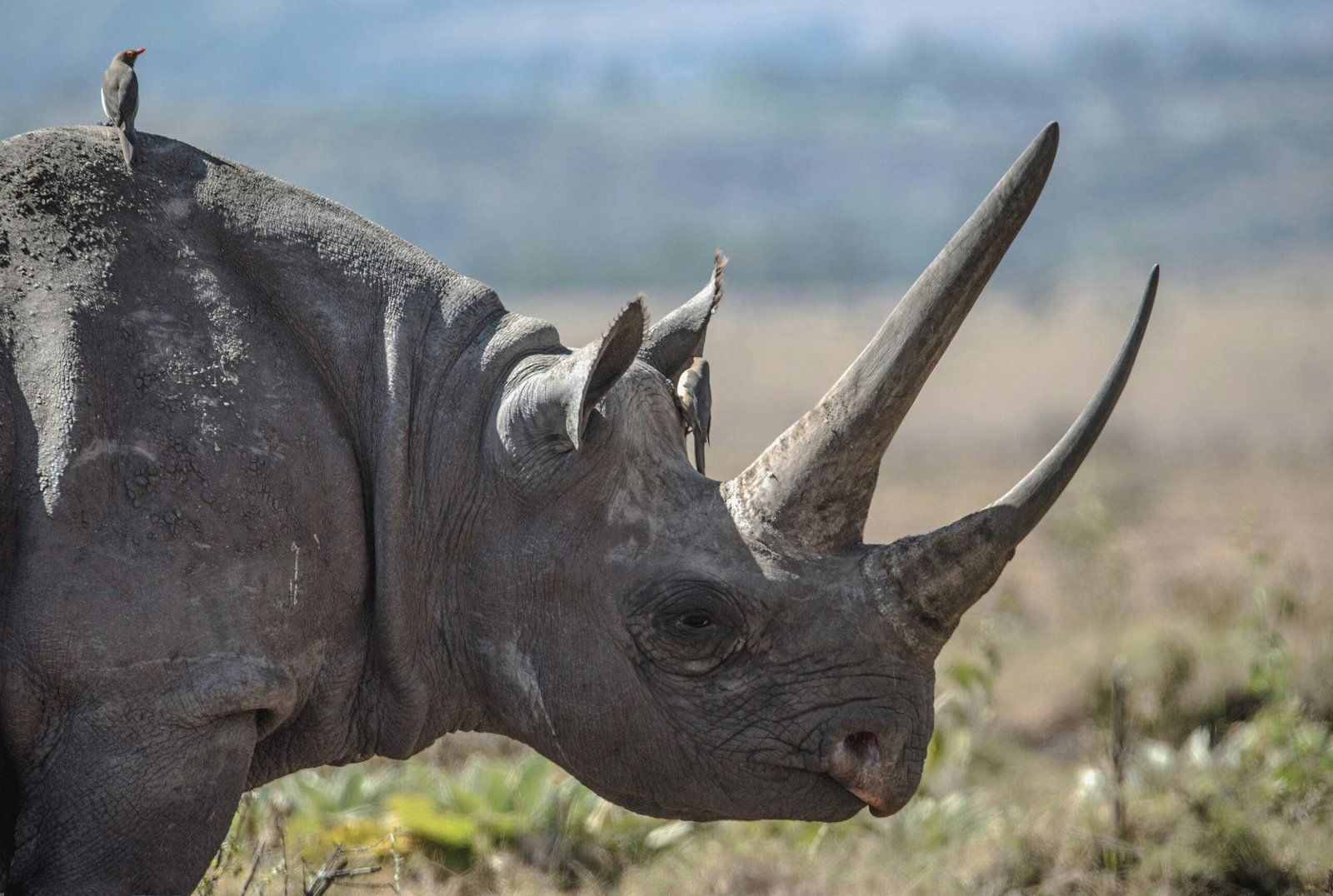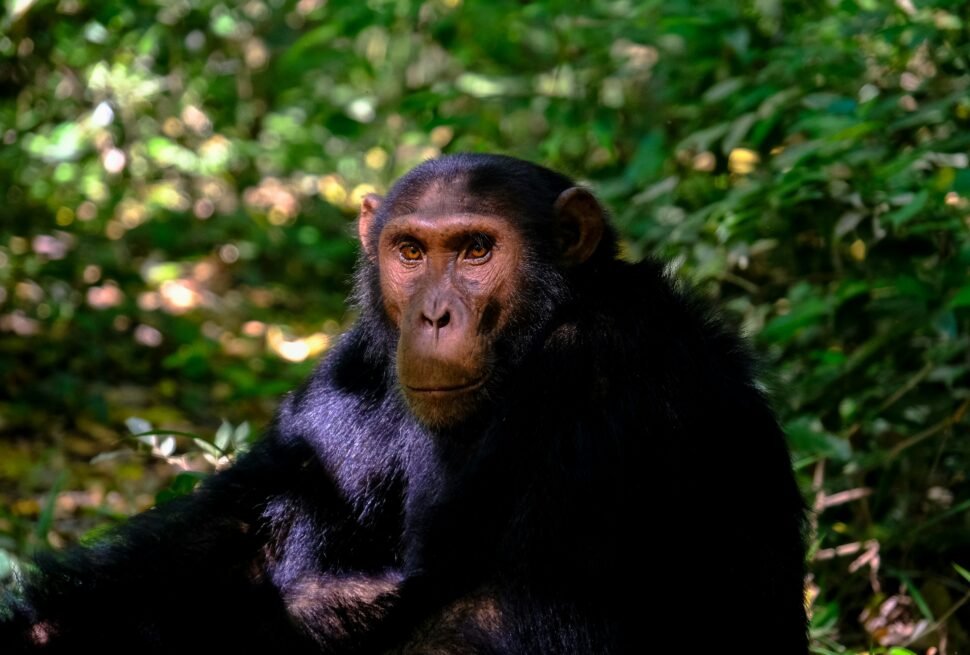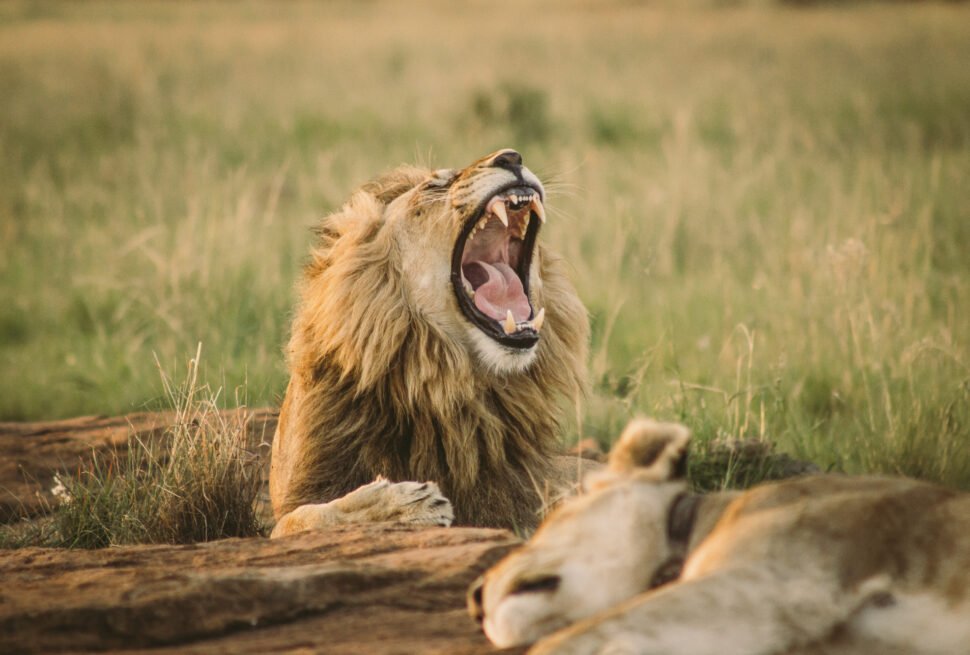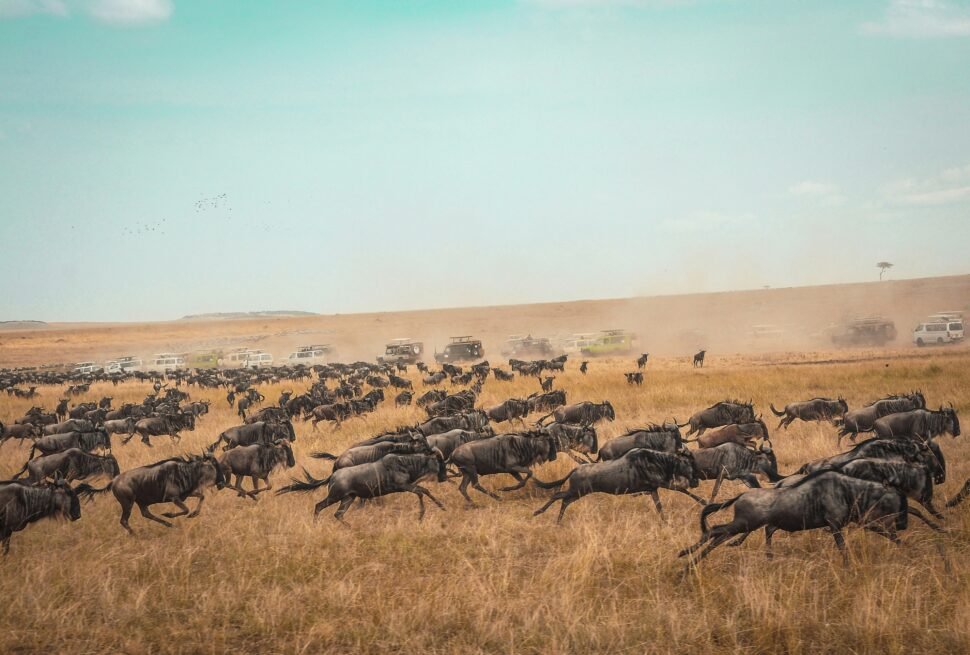Table of Contents
Introduction: Tanzania’s Unique Role in Global Biodiversity
Tanzania, often referred to as the “crown jewel” of African wildlife, is home to some of the planet’s most remarkable ecosystems and species. Stretching from the vast grasslands of the Serengeti to the crystal-clear waters of the Indian Ocean, this East African nation boasts unparalleled biodiversity. With over 40% of its land protected as national parks, game reserves, and conservation areas, Tanzania represents one of the most significant efforts globally to safeguard natural heritage.
The country’s wildlife is a marvel in its own right. It shelters the iconic “Big Five” — lions, leopards, rhinos, elephants, and buffalo — alongside hundreds of other species, from the majestic giraffe to rare creatures like the African wild dog. But Tanzania’s importance extends beyond its famed fauna. It is a critical player in maintaining global ecological balance. Its ecosystems serve as a refuge for migratory species, such as wildebeests and birds, and as a carbon sink, helping mitigate the impacts of climate change.
However, preserving this extraordinary biodiversity is no small feat. Threats like habitat destruction, poaching, and climate change endanger not only Tanzania’s wildlife but also its ecosystems’ ability to sustain life. As such, Tanzania’s role in global conservation is pivotal, with its efforts influencing ecological health far beyond its borders.
In this article, we’ll explore the intricate ecosystems that make Tanzania unique, the challenges they face, and the inspiring conservation initiatives that protect them. By understanding the rich interplay between wildlife, ecosystems, and conservation, travelers can not only appreciate Tanzania’s beauty but also contribute to its preservation.
Tanzania’s Major Ecosystems and Their Key Species
Tanzania’s diverse ecosystems form the foundation of its breathtaking wildlife and its global conservation significance. From the expansive grasslands of the Serengeti to the underwater wonderlands of Zanzibar, these ecosystems provide a rich tapestry of habitats supporting countless species. Each ecosystem is unique, showcasing an intricate balance between flora, fauna, and the environment.
2.1 The Serengeti Plains: The Great Migration and Big Cats
The Serengeti Plains, a UNESCO World Heritage Site, stand as one of the world’s most iconic wildlife destinations. This vast expanse of savannah is synonymous with the Great Migration — a natural phenomenon where over 1.5 million wildebeests, along with zebras and gazelles, traverse the plains in search of fresh grazing grounds. Their journey is fraught with danger as they face predators like lions, cheetahs, and crocodiles.
This migration cycle, driven by rainfall patterns, plays a crucial ecological role. It rejuvenates the Serengeti’s grasslands, spreads nutrients, and sustains the delicate balance of predator-prey dynamics. Predators thrive here, with the Serengeti supporting the highest concentration of large carnivores in Africa. Lions dominate the plains, while cheetahs showcase unmatched speed in their hunts. Leopards, elusive and stealthy, prefer the trees, stalking prey from above.
Beyond the famed predators, the Serengeti is also home to elephants, giraffes, and over 500 bird species, including ostriches and crowned cranes. This incredible biodiversity underscores the Serengeti’s importance as a natural treasure that epitomizes the interconnectedness of life in the wild.
2.2 Ngorongoro Crater: A Microcosm of Biodiversity
Nestled within the Ngorongoro Conservation Area, the Ngorongoro Crater is a unique ecosystem often called “Africa’s Garden of Eden.” This massive volcanic caldera spans approximately 260 square kilometers and hosts a remarkable concentration of wildlife, making it one of the best places in the world for wildlife viewing.
The crater’s floor, a mix of open grasslands, swamps, and acacia woodlands, supports nearly 25,000 large mammals. Lions, hyenas, and cheetahs roam its plains, while black rhinos — critically endangered elsewhere — find sanctuary here. Massive herds of wildebeests and zebras graze peacefully alongside buffalos and gazelles, with elephants often spotted near the swamps.
Birdlife flourishes as well, with flocks of flamingos creating pink hues on Lake Magadi’s surface and raptors like eagles and vultures soaring overhead. The Ngorongoro Crater’s enclosed nature fosters a self-contained ecosystem that highlights the richness and fragility of biodiversity.
2.3 Selous Game Reserve: A Haven for Elephants and Wild Dogs
Spanning over 50,000 square kilometers, the Selous Game Reserve (now part of the Nyerere National Park) is one of Africa’s largest protected areas and a hidden gem for wildlife enthusiasts. Its sprawling landscapes include rivers, woodlands, and savannahs, providing a haven for diverse species.
Selous is particularly renowned for its elephant populations, which, despite facing poaching pressures in the past, remain a significant presence within the reserve. Visitors are often treated to the sight of these gentle giants roaming freely, their numbers slowly recovering thanks to focused conservation efforts.
The reserve is also a critical stronghold for the endangered African wild dog, known for its distinctive coat patterns and exceptional hunting strategies. These highly social predators thrive in Selous, with the reserve supporting one of the largest populations in Africa. Other notable species include hippos and crocodiles inhabiting the Rufiji River and a variety of antelopes, such as impalas and waterbucks, thriving in the reserve’s diverse habitats.
Selous’ relative remoteness and lack of heavy tourist traffic make it an unparalleled destination for those seeking an authentic, off-the-beaten-path safari experience.
2.4 Coastal and Marine Ecosystems: Coral Reefs and Marine Life
Beyond its terrestrial wonders, Tanzania’s coastal and marine ecosystems offer a breathtaking contrast of underwater biodiversity. The Indian Ocean, particularly around Zanzibar, Pemba, and Mafia Island, is home to vibrant coral reefs teeming with marine life.
These reefs support an incredible array of species, from colorful reef fish to larger predators like barracudas and reef sharks. Sea turtles, including the green and hawksbill turtles, nest on Tanzania’s beaches, while dolphin pods and humpback whales are common sights during their seasonal migrations. The marine environment also sustains artisanal fishing communities that rely on its resources for livelihood.
However, these ecosystems face significant challenges. Coral bleaching, driven by rising ocean temperatures, threatens the health of Tanzania’s reefs, reducing their capacity to sustain marine life. Overfishing and coastal development further exacerbate the pressure on these fragile habitats.
Efforts to conserve Tanzania’s marine ecosystems include the establishment of marine parks like Mafia Island Marine Park, where snorkeling and diving experiences allow visitors to explore the underwater marvels while supporting conservation initiatives. These ecosystems remind us of the interconnectedness of life, demonstrating that Tanzania’s natural wealth extends far beyond its iconic savannahs.
Challenges Facing Wildlife and Ecosystems in Tanzania
Tanzania’s rich ecosystems and diverse wildlife face significant challenges, many of which threaten the delicate balance that sustains its natural heritage. These challenges, driven by human activities and environmental changes, have far-reaching consequences for both biodiversity and the communities that depend on these ecosystems.
3.1 The Poaching Crisis: Impact on Iconic Species
Poaching remains one of the most critical threats to Tanzania’s wildlife. Iconic species, such as elephants and rhinos, are particularly vulnerable due to the high demand for ivory and rhino horns in international black markets. Tanzania, once home to one of the largest elephant populations in Africa, experienced a dramatic decline in numbers, losing nearly 60% of its elephants between 2009 and 2014 due to rampant poaching.
The impact of poaching extends beyond population loss. Elephants, for example, play a vital ecological role by shaping their habitats and dispersing seeds, meaning their decline affects entire ecosystems. Similarly, the loss of rhinos threatens biodiversity by disrupting the balance of their habitats. Other species, such as pangolins and lions, also fall victim to illegal wildlife trade and human-wildlife conflict, respectively.
To combat this crisis, Tanzania has implemented various measures, including increased anti-poaching patrols, tougher penalties for offenders, and international collaborations to curb wildlife trafficking. Initiatives like the use of technology, such as drone surveillance and GPS tracking of animals, have shown promise in detecting and deterring poaching. However, sustained efforts are crucial to ensure the survival of these iconic species and the ecosystems they inhabit.
3.2 Habitat Degradation: Urbanization and Agriculture
As Tanzania’s population grows, the demand for land for housing, infrastructure, and agriculture has intensified. Urbanization and agricultural expansion encroach on wildlife habitats, fragmenting ecosystems and limiting the natural ranges of many species. Forests and grasslands are cleared to make way for crops, roads, and settlements, leaving wildlife with shrinking areas to roam and forage.
The Serengeti, for instance, faces threats from proposed developments, such as highways that could disrupt the Great Migration and alter predator-prey dynamics. Similarly, deforestation in areas like the Eastern Arc Mountains endangers endemic species and reduces water catchment areas, impacting both wildlife and local communities.
Conservation organizations and the Tanzanian government have sought to address habitat degradation through initiatives like community-based conservation programs, which balance development needs with environmental preservation. Efforts to create wildlife corridors and promote sustainable agricultural practices are critical in mitigating the impact of human activities on wildlife habitats.
3.3 Climate Change: A Growing Threat
Climate change poses an escalating threat to Tanzania’s ecosystems and wildlife. Rising temperatures and unpredictable weather patterns disrupt the natural rhythms of these ecosystems, leading to profound changes in species behavior, migration patterns, and survival rates.
One notable example is the Serengeti-Mara ecosystem, where changes in rainfall patterns influence the timing and availability of grazing grounds for the Great Migration. Prolonged droughts can lead to food and water shortages for herbivores, which in turn affects predators that rely on these animals for sustenance. Aquatic ecosystems, such as Lake Victoria and the Rufiji Delta, also face challenges from reduced water levels and increased salinity, impacting fish populations and other aquatic species.
Climate change also exacerbates existing threats, such as habitat loss and human-wildlife conflict. As natural resources become scarcer, wildlife often ventures closer to human settlements in search of food and water, leading to increased conflict.
To address these challenges, Tanzania has joined global climate initiatives and developed strategies to enhance ecosystem resilience. Reforestation projects, sustainable land management, and the establishment of protected areas help mitigate the effects of climate change. However, long-term success requires global collaboration and local community involvement to ensure both wildlife and human populations can adapt to a changing environment.
Conservation Efforts: Protecting Tanzania’s Wildlife
Tanzania is celebrated for its extraordinary biodiversity, and preserving this natural heritage requires multifaceted conservation efforts. From the establishment of vast protected areas to engaging local communities and enforcing anti-poaching measures, the country has made significant strides in ensuring the survival of its wildlife and ecosystems. However, these efforts face continual challenges, requiring sustained commitment and innovation.
4.1 Protected Areas and National Parks
Tanzania’s expansive network of protected areas serves as the cornerstone of its conservation strategy. Covering approximately 38% of the country’s land, these areas include 22 national parks, 28 game reserves, and multiple conservation areas and wildlife corridors. Iconic sites such as the Serengeti National Park, Ngorongoro Conservation Area, and Selous Game Reserve are globally recognized for their role in safeguarding biodiversity and providing critical habitats for countless species.
National parks are vital not only for protecting wildlife but also for preserving entire ecosystems. They act as sanctuaries where species can thrive without interference from human activities such as agriculture, logging, or poaching. For example, the Serengeti National Park protects the migratory routes of wildebeests, zebras, and other animals involved in the Great Migration, while Tarangire National Park serves as a refuge for elephants and baobab trees.
Protected marine areas, such as the Mafia Island Marine Park, safeguard Tanzania’s rich coastal ecosystems, including coral reefs, sea turtles, and fish populations. These areas are critical in combating overfishing and preserving the health of marine biodiversity.
While protected areas are integral to conservation, they are not without challenges. Limited funding, encroachment, and poaching pressures highlight the need for increased investment and innovative management strategies to maintain these vital ecosystems.
4.2 Community-Based Conservation Programs
Tanzania’s approach to conservation has increasingly embraced the involvement of local communities, recognizing their indispensable role in preserving biodiversity. Community-based conservation programs (CBCPs) empower residents to manage and benefit from wildlife resources while fostering a sense of stewardship for the environment.
One prominent example is the Wildlife Management Areas (WMAs) initiative. Under this program, communities are granted rights to manage wildlife resources on their land and share in the revenue generated from tourism and conservation activities. WMAs like Burunge, adjacent to Tarangire National Park, have shown success in reducing human-wildlife conflict and promoting sustainable land use.
Additionally, programs that integrate eco-tourism provide direct economic benefits to local populations, creating financial incentives for conservation. For instance, cultural tourism initiatives allow visitors to experience traditional Maasai or Hadzabe lifestyles while contributing to local livelihoods and conservation efforts.
Education is another critical component. Programs aimed at teaching communities about the value of biodiversity and sustainable practices have led to greater awareness and participation in conservation activities. However, challenges remain, such as ensuring equitable revenue distribution and addressing cultural or economic barriers to participation.
4.3 Anti-Poaching and Law Enforcement Initiatives
The battle against poaching has been central to Tanzania’s conservation agenda. Poaching, driven by the illegal wildlife trade, has posed significant threats to iconic species such as elephants and rhinos. In response, Tanzania has implemented robust anti-poaching measures and strengthened law enforcement to curb these activities.
One of the most notable initiatives is the establishment of the National Anti-Poaching Task Force, which collaborates with wildlife authorities, rangers, and international organizations to dismantle poaching networks. Advanced technologies, such as drone surveillance, GPS tracking of animals, and infrared cameras, have been employed to monitor wildlife and deter poachers.
Tanzania has also revised its wildlife protection laws to impose harsher penalties for poaching and trafficking offenses. Offenders now face substantial fines and lengthy prison sentences, reflecting the government’s commitment to safeguarding wildlife.
International collaborations have further bolstered these efforts. Partnerships with organizations such as the World Wildlife Fund (WWF) and the Frankfurt Zoological Society have provided funding, training, and resources for anti-poaching initiatives. Additionally, Tanzania’s participation in global agreements, like the Convention on International Trade in Endangered Species (CITES), has strengthened its ability to combat illegal wildlife trade.
Despite these advancements, poaching remains a persistent challenge, fueled by high demand for ivory, rhino horns, and other wildlife products. Continuous investment in ranger training, technology, and public awareness campaigns is essential to sustain progress and protect Tanzania’s wildlife.
Tanzania’s conservation efforts reflect a dynamic and evolving approach to protecting its natural heritage. Through a combination of protected areas, community involvement, and robust anti-poaching measures, the country has demonstrated its commitment to safeguarding biodiversity. However, maintaining these achievements requires ongoing support, innovation, and collaboration to address the complex challenges facing wildlife and ecosystems.
The Role of Sustainable Tourism in Conservation
Sustainable tourism plays a pivotal role in preserving Tanzania’s wildlife and ecosystems while ensuring that the tourism industry remains viable for future generations. By emphasizing eco-friendly practices and encouraging travelers to contribute to conservation, sustainable tourism fosters a harmonious relationship between people and nature, benefiting both the environment and local communities.
5.1 Eco-Lodges and Low-Impact Travel
Eco-lodges and low-impact travel initiatives have become integral to sustainable tourism in Tanzania. These accommodations are designed to minimize environmental impact while offering visitors a comfortable and immersive experience in nature. Built using locally sourced and sustainable materials, many eco-lodges blend seamlessly into their surroundings, reducing visual and ecological disruption.
For instance, lodges in the Serengeti or Ngorongoro Crater prioritize renewable energy sources, such as solar power, and implement water-saving systems, such as rainwater harvesting and efficient plumbing. Some even operate on a zero-waste principle, composting organic waste and recycling materials. These measures help reduce the carbon footprint of tourism while protecting the ecosystems tourists come to experience.
Beyond infrastructure, eco-lodges often employ and train local community members, ensuring that tourism revenue benefits nearby populations. Guests are encouraged to engage in sustainable activities, such as guided wildlife walks, which are designed to be non-intrusive and educational. These practices ensure that tourism aligns with conservation goals, preserving natural habitats and fostering a deeper appreciation of wildlife.
Low-impact travel also includes adhering to responsible wildlife viewing guidelines, such as maintaining a safe distance from animals and avoiding off-road driving, which can damage sensitive habitats. By promoting eco-conscious accommodations and travel practices, Tanzania demonstrates how tourism can support conservation efforts rather than deplete natural resources.
5.2 Traveler Contributions to Conservation
Tourists visiting Tanzania play a crucial role in supporting conservation efforts. By making ethical choices and contributing directly to conservation initiatives, travelers can ensure that their presence positively impacts the environment and local communities.
One of the most effective ways tourists can contribute is by choosing tour operators and lodges that actively support conservation programs. Many companies partner with wildlife conservation organizations, directing a portion of their profits toward initiatives such as anti-poaching patrols, habitat restoration, and community education. Travelers can research and select operators like Komkya Safaris, which prioritize sustainable and ethical practices.
Tourists can also support conservation by adhering to ethical wildlife tourism practices. For instance, avoiding activities that exploit animals, such as riding elephants or visiting poorly managed zoos, sends a message that exploitation is not acceptable. Additionally, travelers are encouraged to respect local cultures and environments, ensuring their actions align with conservation principles.
Financial contributions, whether through donations to wildlife funds or participating in voluntourism programs, also make a tangible difference. For example, programs that allow tourists to assist with turtle conservation on Tanzania’s coastline or participate in tree-planting initiatives in degraded areas contribute directly to preserving ecosystems.
Lastly, spreading awareness by sharing experiences and educating others about Tanzania’s wildlife and conservation challenges can amplify efforts globally. By becoming advocates for sustainable tourism, travelers extend their impact far beyond their visit.
Sustainable tourism ensures that Tanzania’s stunning landscapes and iconic wildlife are preserved for generations. By embracing eco-lodges, practicing responsible travel, and contributing to conservation efforts, both the tourism industry and travelers themselves play an essential role in safeguarding the country’s natural heritage.
Seldom-Considered Conservation Insights
Conservation in Tanzania often highlights its charismatic megafauna, such as lions, elephants, and rhinos. However, lesser-known contributors to the country’s biodiversity, such as pollinators and wetlands, play equally vital roles in maintaining healthy ecosystems. These insights provide a deeper appreciation for the intricate web of life that sustains Tanzania’s wildlife.
6.1 The Unsung Heroes: Tanzania’s Pollinators
While Tanzania’s savannahs echo with the roars of lions and trumpets of elephants, the subtle hum of pollinators often goes unnoticed. Bees, butterflies, beetles, and even bats are unsung heroes of biodiversity, performing a critical role in sustaining both natural ecosystems and agricultural landscapes.
Pollinators are essential for the reproduction of many plant species, including wild flora and crops. Over 70% of the world’s flowering plants depend on pollination, and Tanzania is no exception. In regions like the Kilimanjaro foothills and coastal areas, bees and butterflies ensure the survival of fruit-bearing trees and flowering plants that provide food and shelter for countless wildlife species. Crops such as coffee, mangoes, and cashews also rely heavily on pollination, linking pollinators directly to Tanzania’s economy.
However, pollinators face significant threats, including habitat loss, pesticide use, and climate change. For example, deforestation in regions like Usambara and Uluguru disrupts the delicate ecosystems that pollinators depend on. Conservation initiatives that protect pollinator habitats, such as maintaining wildflower-rich meadows and planting native flora, are crucial for their survival.
Moreover, integrating pollinator-friendly practices into agricultural policies can yield dual benefits: boosting crop productivity and conserving biodiversity. Farmers are increasingly adopting practices like intercropping and avoiding harmful pesticides, which support pollinator populations. The role of pollinators underscores the interconnectedness of conservation, agriculture, and food security in Tanzania.
6.2 Conserving Tanzania’s Wetlands
Often overshadowed by savannahs and forests, Tanzania’s wetlands are ecological powerhouses that serve as vital habitats for a wide array of species. These ecosystems, which include swamps, floodplains, and river deltas, play a critical role in supporting migratory birds, fish, and terrestrial wildlife while regulating water cycles and preventing soil erosion.
The Kilombero Valley Wetlands, one of East Africa’s largest floodplains, exemplify the importance of these ecosystems. This wetland is a haven for diverse species, including the elusive sitatunga antelope and an array of fish critical to local livelihoods. Additionally, it serves as a crucial stopover for migratory birds such as storks and flamingos, connecting Tanzania’s biodiversity to global ecosystems.
Wetlands also act as natural water filters, improving water quality by trapping sediments and breaking down pollutants. In areas like the Rufiji Delta, these functions support not only wildlife but also human communities that rely on clean water for agriculture and daily needs.
Despite their importance, wetlands face ongoing threats. Unsustainable practices, such as agricultural encroachment, overfishing, and pollution, have degraded many wetland areas. Climate change further exacerbates these pressures, with rising temperatures and altered rainfall patterns leading to the drying up of key wetlands.
Conservation efforts for wetlands involve both protective measures and community engagement. Programs like the Ramsar Convention, to which Tanzania is a signatory, aim to ensure the sustainable use of wetland ecosystems. Additionally, local initiatives focused on reforestation of riparian zones and sustainable fishing practices are critical for wetland preservation.
Conclusion
Tanzania’s natural heritage is one of the richest in the world, home to extraordinary wildlife and ecosystems that are vital not only to the country but also to global biodiversity. From the iconic Serengeti to the diverse marine ecosystems along the coast, Tanzania offers unmatched experiences for visitors while playing a critical role in conserving nature. However, these ecosystems face significant challenges, including poaching, habitat loss, and climate change.
The good news is that conservation efforts are making a difference. Protected areas, community programs, and sustainable tourism initiatives are helping to preserve this incredible biodiversity for future generations. But the fight is far from over. Wildlife and ecosystems need our continued support to thrive, and everyone has a role to play in their protection.
As a traveler, you can make a positive impact by choosing ethical tour operators like Komkya Safaris. By booking with us, you not only enjoy a well-curated, unforgettable safari experience but also contribute to conservation programs and local communities. We prioritize eco-friendly practices, support anti-poaching initiatives, and collaborate with local communities to ensure that tourism benefits both people and wildlife.
Your choice to travel responsibly can directly support Tanzania’s conservation efforts. By visiting Tanzania and respecting its natural and cultural heritage, you help protect its stunning landscapes and wildlife. Together, we can ensure that these treasures remain for generations to come.
When you’re ready to experience the best of Tanzania and contribute to its conservation, Komkya Safaris is here to guide you. Let’s protect Tanzania’s natural heritage—one journey at a time.




